Cooking the food you have on hand without strictly following recipes saves money and time, sparks creativity—and thus tastier food—and keeps food out of landfill, which reduces methane gas emissions. You don’t need to buy some sort of fancy, expensive eco-gadget to get started. You won’t lead an ascetic life devoid of pleasure—quite the opposite! In fact, I can’t think of one downside to eating all the food you buy, unless you only buy candy.
If following COP26 coverage has induced eco-anxiety or despair—or worsened these pre-existing conditions, taking action can help. And although inadequate, some progress has transpired at the conference. One thing we can all do on an individual level to address the climate crisis is to reduce food waste. (Joining and supporting a climate-focused organization like 350.org is another.)
Of course, reducing uneaten food in my kitchen won’t save the world but collectively we do make a difference. In addition to individuals, we absolutely need food-service businesses, grocery stores and farms to do their part. But with households accounting for 43 percent of the food waste pie in the US, individuals can certainly play a role.
How wasted food exacerbates climate change
Globally about one third of the food the world produces goes uneaten, according to the UN. At the same time, around 800 million people don’t have enough to eat. That uneaten food generates from 8 to 10 percent of global greenhouse gas emissions. To put that into perspective, the airline industry accounts for about 2.5 percent of global emissions.
Uneaten food wastes the resources that went into producing it: water, energy, land, labor, capital, seeds and so on. Compacted in a landfill, food and food scraps lack oxygen. The anaerobic bacteria that break down that food release methane gas, a greenhouse gas more than 80 times as potent as carbon dioxide over a 20-year period.
“Sign me up! But how can I cook without a recipe?” you may ask…
Step 1: Shop at home before heading to the store
Before buying more food, rifle through the refrigerator. What perishable food do you have on hand that you should eat soon? Next, look through the freezer and cupboards and ask yourself the following:
What can you make with what’s on hand? Let the contents of your refrigerator dictate your next meal.
Do you need anything else to make your dish? Don’t be afraid to make substitutions—within reason, of course! Don’t substitute chopped up gummy bears for sugar in a cookie recipe, for example. And if you don’t know what kind of substitution will work for a dish, search online. You’ll find pages and pages of results.
What can you do with any leftovers or leftover ingredients? Think ahead as you plan this whatever’s-on-hand dish. Does it call for a cooked grain? Prepare extra to use in another dish later in the week.
Make a shopping list if you need anything for your dish. Now you can go shopping if you have to, which you may not.
Step 2: Learn some simple, highly adaptable recipes
Okay, so you will need a bit of a recipe repertoire to cook this way. But think of those recipes more as guidelines rather than strict formulas. As you cook along these guidelines, you’ll gain more confidence in the kitchen. So, while you may start with soup—food waste reduction 101—you’ll soon branch out to other dishes. And always remember to taste as you go!
In Step 1, you likely found ingredients that will enable you to cook at least something. Browse the ideas below to help you deal with commonly wasted types of food.
Vegetables
Intending to eat healthier, we sometimes buy more vegetables that we can eat.
Make soup. Making a vat of soup isn’t much more work than making a small pot so make it worth your while and opt for a vat if you have enough vegetables. Freeze excess soup in wide-mouth glass jars to enjoy later and take a night off of cooking. Find my basic soup formula here.
Roast them. Perhaps sugar pie pumpkins really tempted you recently at the farmers’ market. (I couldn’t help myself at $1 per pound!). Roast a slew of vegetables and eat them immediately, or toss leftovers into salads or fill hand pies (pastry is a zero-waste food) or make an omelet. Roasting vegetables brings out the flavor. Purée them with homemade broth for fabulous soup.
Bake quick breads, muffins and pancakes. Use some of that puréed pumpkin to make pumpkin quick bread (here’s a recipe with sourdough starter discard). Zucchini bread helps gardeners retain their sanity during the summer zucchini harvest. Bake lots and freeze to enjoy later or give it away. Excess carrots give you an excuse to bake carrot cake.
Preserve through fermentation. Make a brine to submerge vegetables or chop, salt and stuff them into jars. Excess cabbage, carrots, cauliflower, bell peppers, hot peppers, tomatoes and so on take on wonderful flavors when fermented. Go here for all things fermented.
Blanch and freeze. If you have a glut of green beans or broccoli or asparagus or cauliflower, for example, boil or steam them briefly, drain and plunge them in ice-water. Drain again very well and freeze in jars. Go here for an article with blanching times for various vegetables.
Or roast and freeze. I roast and freeze tomatoes every year at the end of the growing season. They help me survive without canned tomatoes, which, even if I didn’t avoid because of the plastic liner, I wouldn’t want to eat after tasting roasted tomatoes. Similarly, I roast pumpkin (or cook it in my pressure cooker) but purée it before freezing.
After Halloween this year, I asked my neighbors for unwanted pumpkins—carved and whole. They gave me about 20! The carved ones fed my compost and raised beds. I roasted whole small ones to feed us.
Make pesto. You can make pesto out of all kinds of greens besides basil: fennel fronds, carrot tops, kale, spinach. Whir them around in a food processor along with garlic, nuts, olive oil, salt and, if desired, cheese or nutritional yeast.
Dehydrate. I dehydrated some tomatoes in the back of a car last year during scorching heat and fires. I later rehydrated them for a dish. You can also grind them up for tomato powder. A solar food dehydrator works similary to a car during a heat wave. If you don’t have a food dehydrator of any sort, use the oven at the lowest temperature.
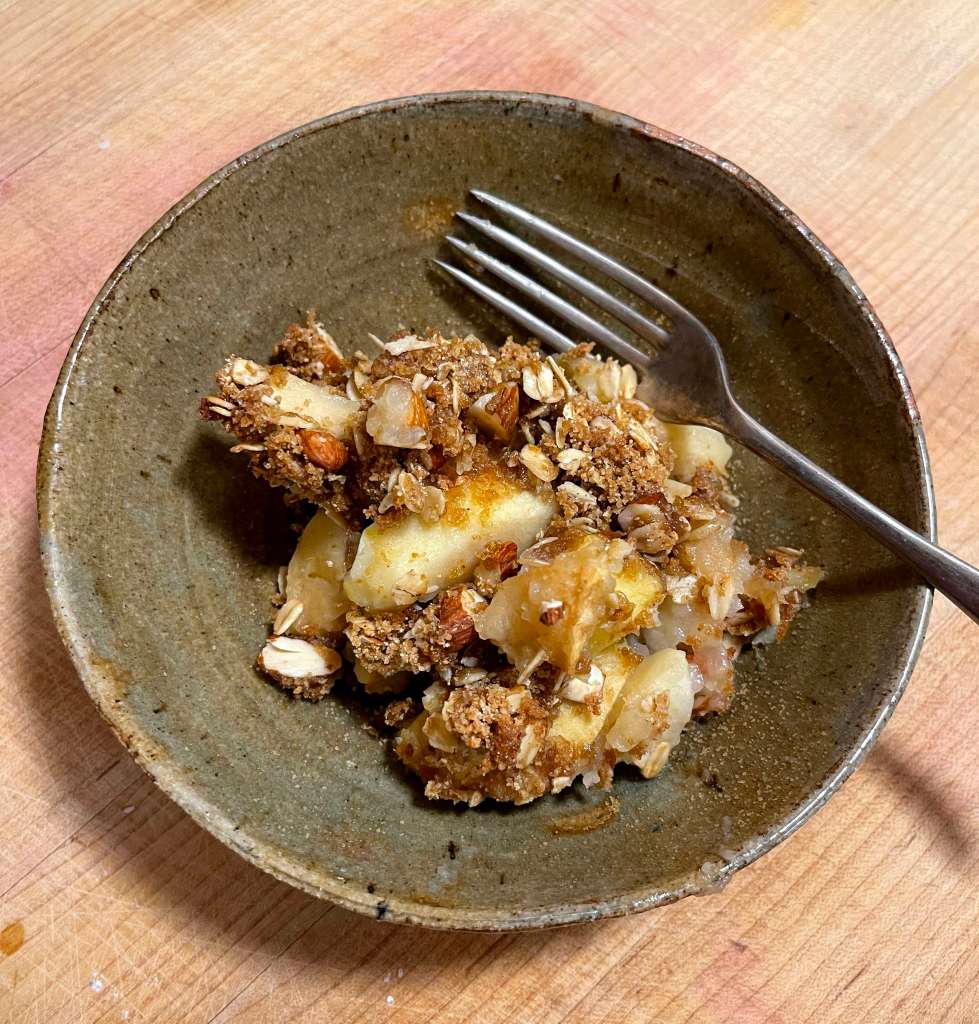
Fruit
With all of these options, your excess fruit won’t go uneaten.
Bake it. When my kids were little, I make baked apples often. I’d core apples, place them in a ramekin or other small oven-proof dish, and fill the centers of the apples with a bit of butter, a spoonful of brown sugar and a pinch of cinnamon. Bake at 375°F until tender and bubbly.
Cook it down. Slice up, add a bit of sweetener if desired and cook down into a fruit compote. So simple and delicious.
Bake a pie. Pastry can divert pounds and pounds of fruit from landfill. You could also make a galette or hand pies or a fruit crumble if pastry intimidates you.
Bake quick bread. Banana bread, apple-spice bread, persimmon bread (aka cake)…you can bake all kinds of fruity quick breads. Mash bananas up and freeze them to bake with later if you can’t get to them immediately.
Ferment it. A bit of fermented fruit chutney on the side complements all kinds of savory dishes. Fermented fruit can turn alcoholic after five days or so (depending on your kitchen temperature) but it tastes so delicious that you may eat it all before then (or you may appreciate the added boozy goodness).
Freeze it. Berries, stone fruit, pineapple and bananas all freeze well. Slice them up first, spread them across a cookie sheet and freeze. After the fruit has frozen, transfer it to clean glass jars for the freezer. (Find more on freezing fruit here.)
Dehydrate it. Add dehydrated fruit to baking, granola, muesli, salads and trail mix or simply eat it as is. Go here for dehydrating fruit in the oven and here for solar dehydrating.
Dairy
If you consume dairy, you don’t want a drop of it to go to waste. Dairy requires many more resources to produce than vegetables do—the water, land and feed to raise cattle, the refrigeration to keep dairy cold, the extra packaging.
If you have bought more milk than you can drink, you have several options for dealing with it:
Bake something. Quick breads, muffins, french toast, bread pudding, actual pudding and so on won’t likely go uneaten.
Cook something. Make quiche, scalloped potatoes, mashed potatoes, strata and so on.
Make soft cheese. If you find yourself with a large amount of milk in need of a waste intervention, make a soft, non-aged cheese like paneer or ricotta.
Preserve it through fermentation. Sour cream or yogurt or kefir will last for a few weeks longer than the milk itself does. Plus you now have dairy that contains beneficial cultures.
Freeze it. Yes, you can freeze milk! Put it in a clean, wide-mouth jar with a couple of inches of headspace for room to expand as it freezes. To thaw, move it the refrigerator the night before you need it. (Go here for more on freezing food in jars.)
Eggs
Just like milk, eggs require more resources to produce than vegetables do. To deal with excess eggs quickly:
Cook a bunch of hardboiled eggs. You’ll have quick snacks ready to eat or you can make deviled eggs or egg salad later.
Freeze them. Don’t freeze eggs in their shells! Crack them, whisk them and freeze them in a jar. You can also freeze the whites and yolks separately.
Bread
My daughter MK sent me the above picture last fall. An astonishing 750,000 loaves of bread go to waste every day in Canada! The following ideas will help keep bread out of the bin.
Croutons. Cut up into cubes, fry in olive oil and garlic. Add to salad and soup or eat by the handful.
Bread crumbs. Add density and texture to meatballs and bean burgers. Make a breading for eggplant parmigiana. Sprinkle breadcrumbs on top of macaroni and cheese, toss on salads, stir into oatmeal. (Go here for bread crumb instructions.)
Stuffing. You want stale bread for this and people pay a premium for it when they buy stuffing mixes. Lay slices out flat on a cookie sheet to dry out.
French toast. For two slices, whisk together an egg, a tablespoon of milk, a splash of vanilla and a dash of cinnamon in a pie plate or other shallow, flat dish. Place stale bread slices in to soak up the egg mixture, turn them over to saturate the other side and fry until golden. Serve with maple syrup, powdered sugar and lemon juice or fruit compote you made to prevent food waste!
Bread pudding. Turn stale bread into a rich, sweet dessert. I included a recipe for Mexican Hot Chocolate Bread Pudding in my cookbook.
Soup filler. Place a piece of bread in the bottom of a bowl and ladle hot soup over top. Even very stale bread will soften up.
Kvass. This fermented, slightly alcoholic drink is like a national drink in Russia and Ukraine. Preferably, make it with stale rye bread. Go here for a recipe with more information.
And if you do only buy candy…
You probably don’t but between Halloween and the holidays, it can feel that way!
My daughter Charlotte attends school in Montreal and lives with extended family who bought more Halloween candy than they know what to do with. So she made cookie dough with some of it and told me she will freeze the dough balls below to bake later. Frozen candy cookie dough puts the temptation to eat lots of sweets on ice, so to speak.
Charlotte chopped up Twix, Snickers, Reese’s Peanut Butter Cups and M & M’s and essentially followed a chocolate chip cookie recipe for the dough. If your kids brought home sacks full of candy, this trick can help you ration the treats a bit. And they’ll have fun making cookies with you if they help.

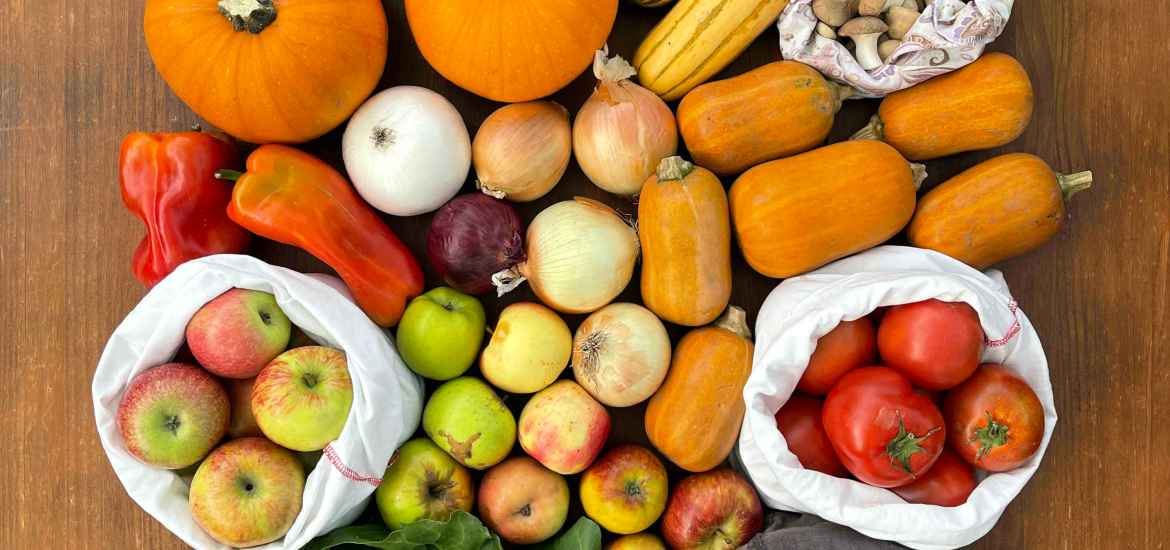


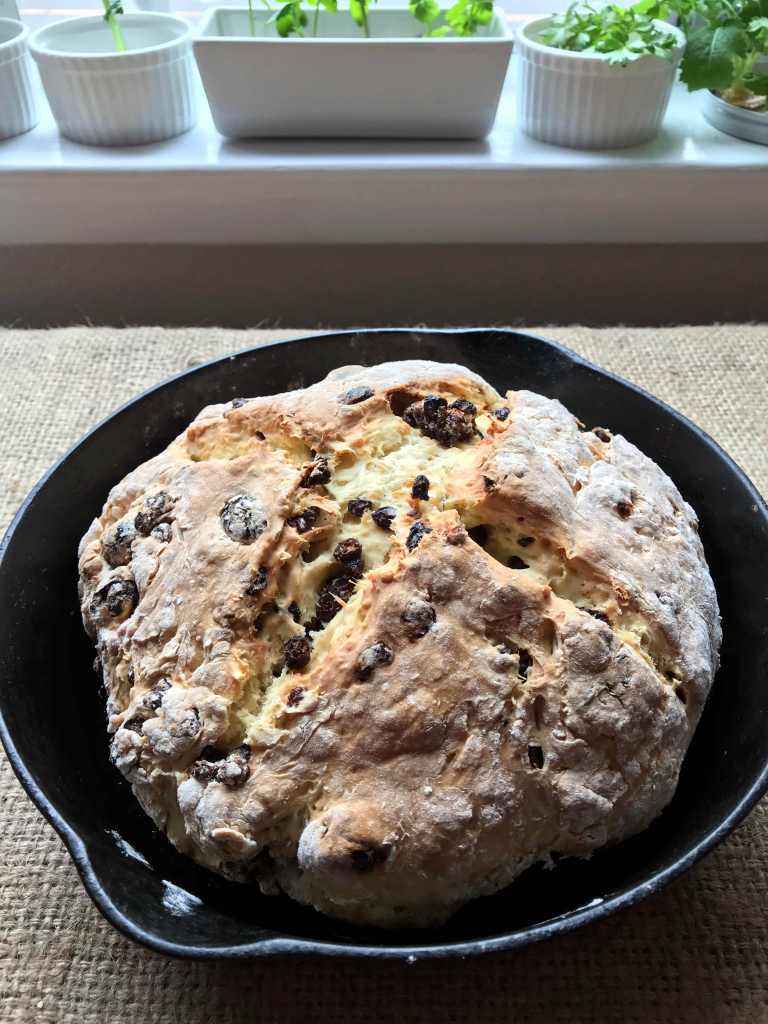
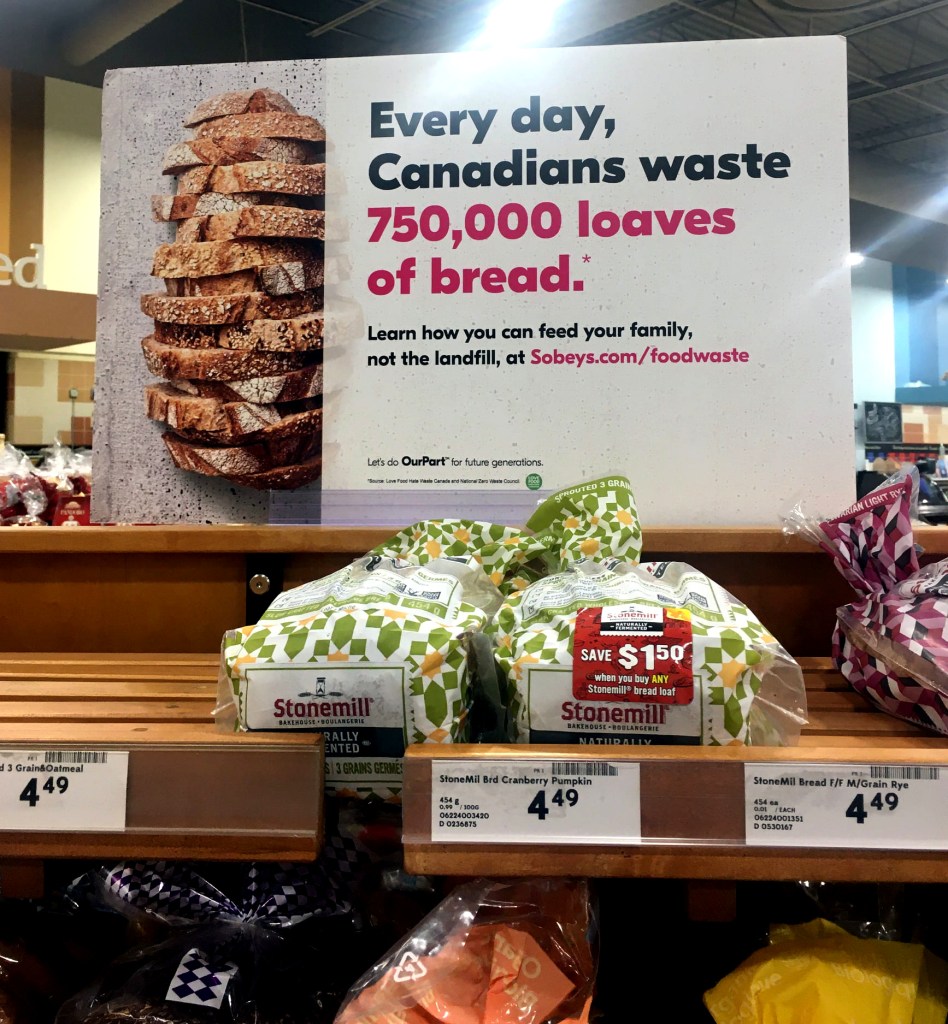
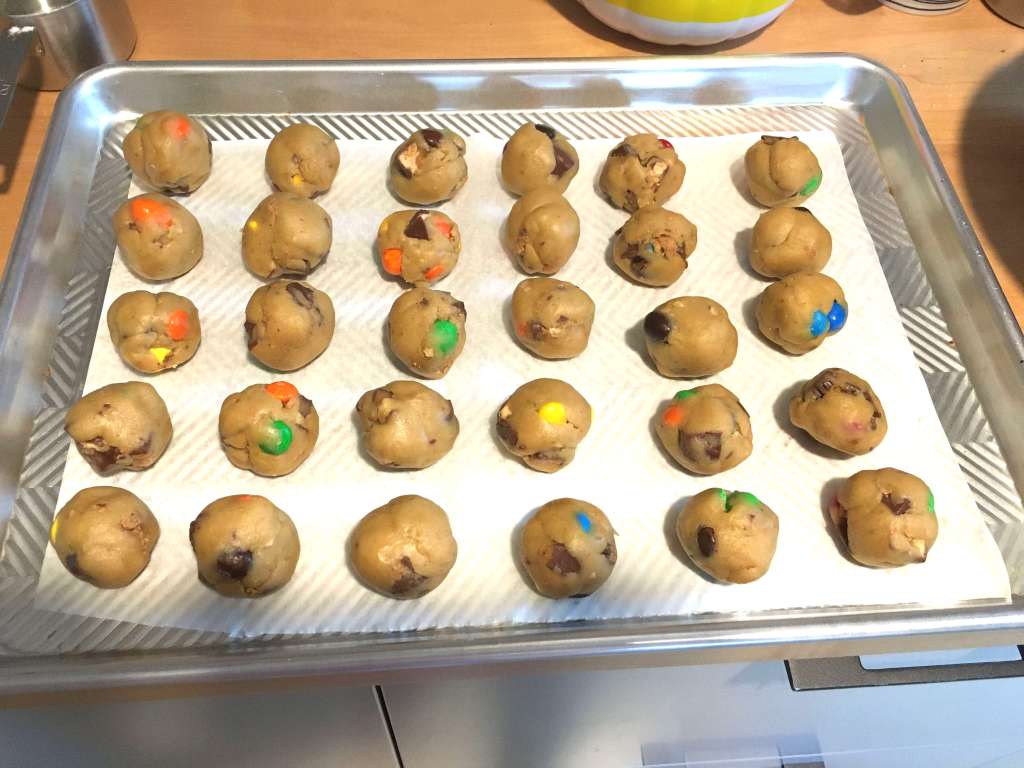
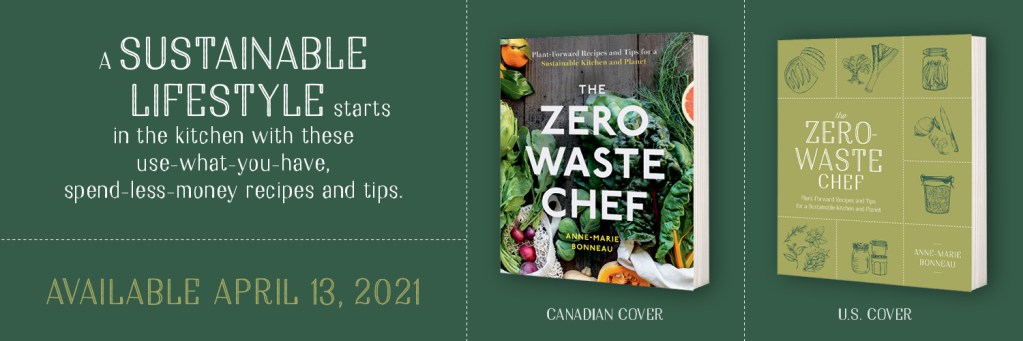
I love your emails and your blog, Anne-Marie! Thank you for all that you do.
You might do this, too, but when I get home from my weekly trip to the farmers’ market, I write down everything I bought and everything in the refrigerator and on my counter that is leftover from last week. Then I daily check my list to see what I can combine to make for dinner — my list helps me eat what I have so that I don’t throw anything away. I also wrap my veggies in kitchen towels before putting in the fridge, so without my list, it would be difficult for me to identify what veggie presents I even have (I can’t remember everything)!
Please keep up the great work educating us on how to be better citizens of the Earth.
-gloria
Thank-you for your post today. It is timely for us. We had an issue with our fridge/freezer going off this past weekend and so we have lots of food that needs to go into soups, bread pudding, and yes, buttermilk that tastes okay still. I always used to make soups out of left-overs but my teenage girls don’t like soup but I am going to try and bribe them with the onions, potatoes on hand, the lentils I found in the freezer. I am also grateful for your recipe for Irish soda bread, my grandmother was Irish and my grandfather won a medal in WW1 so today is a special day for us in Remembrance. I am going to try making it with whole wheat flour milled in Manitoba, so I will see how it turns out. I used it in a whole-wheat banana bread where I used left over agave syrup instead of honey and it had such a nice rich flaxy flavour.
Thank-you for reminding me about your bread pudding recipe in your Cook Book which I was the last one out on the shelf at Indigo, as I had started following your blog. It became a bible to read at night to keep me on steady my No-plastic initiative. I did find unsweetened baking chocolate in the fridge! My British grandmother used to make bread pudding with raisin sauce often. One of my daughters was trying to make me throw out 1/2 bread loaf that is going stale as per your picture from Sobeys.
I am also using some of your information gleaned from this post and the links to give ideas for some education/research ideas for my daughter’s middle school class on climate change as I discussed with their main pod teacher. These include your information on methane vs carbon emissions and students researching where emissions come from, which countries produce the most (and why), and how to research sources of information. I keep reading different percentages given for airline fuel emissions depending what is being assessed such as jet fuel from the very rich or recreational travel, etc.
I also think that their age group could learn more about food waste, as in compost piles in yards – bear issues – compost pots need taking down to the organic waste bin in building complexes, and if not fruit flies appear.! The issues with passive solar heating, we used to live where we could hang the laundry out to dry, forget that here. I had looked around for cooking classes for my daughters and due to heighted restrictions for Covid, a local French chef would not give group lessons yet, I was about to ask their principle when cooking is taught in the education system here. The very next week the I found a rec. center class that was going to offered at their school that was full within one hour of it being open for registration so I could only put my kids on the waitlist. However, I am collecting ideas about cooking basics for their age group and I think some of the ideas you present in your blog, on supply chain issues, and your recipes for preventing food waste would be good to be incorporated.
The school system is asking for more ways we can include Indigenous education into the student’s courses this year. Since I got such sticker shock from the food prices when we moved back to BC, I have been trying to buy food grown seasonally and locally. I find myself constantly asking what did the Indigenous communities on this land grow and eat besides fish, what are they eating now, what are their chefs cooking in their restaurants?. So I am thinking of suggesting these ideas to the staff. Perhaps I will end up teaching a free extracurricular course. I did do a term at Johnson’s and Wales. Thank-you for the inspiration!
Such an important post Anne Marie. There is almost always something we can do with those leftovers, even though sometimes we lack the will. It is good to keep those statistics in mind.
We have a green glass bottle that gets filled with out of date milk to use for cooking and breadmaking. It keeps for weeks in that bottle without getting sour. I picked that bottle up at a thrift store for a quarter years ago and it has saved gallons and gallons of milk. Don’t be afraid to buy a bottle with a rusty lid. We have found that we almost always have a lid that will fit on a saved jar. We also have some half gallon clear glass bottles and often pour our milk over to those and it will keep for several days after the date at which time it goes to the green bottle.
Love this post so much. I like to remind people that these practices become habit and then they aren’t “work”. Make a plan, shop seasonally, use your leftovers & the freezer, get creative in the kitchen, and share meals with friends. I cannot abide food waste!